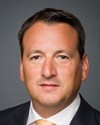Absolutely, and I appreciate the question. I would just say that given the technical and precise questions offered by my colleague on forestry in his first time out, I'm going to have to brace myself for further questions, because I thought that was pretty detailed and impressive.
In particular, on the geo-mapping for energy and minerals program, as you know, this was launched in 2008 as part of a five-year initiative to produce new, publicly available regional-scale geoscience knowledge in Canada. In 2014 specifically, the geo-mapping for energy and minerals program launched its new research program, with 14 activities that were initiated following extensive consultations with our provincial and territorial counterparts. The program also engaged, as it should, northerners and their institutions, to seek input on how the program's research activities can most benefit northerners.
I can tell you that the long-term expected outcome of the geo-mapping for energy and minerals program is that of contributing to a strong northern economy through stable long-term investment in responsible resource development and, importantly, producing the kind of information that supports increased exploration, new mineral and energy resource opportunities, and a better understanding of what that really means. In our view, this is obviously going to contribute significantly to communities, to northerners making informed decisions about their land and the future in terms of their economy, and, as is often the case, to how resource projects can develop responsibly for their economic benefit without any compromise to the safety and environmental issues or challenges that any given project imposes.

